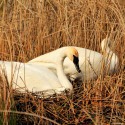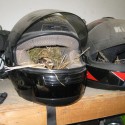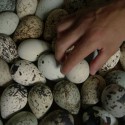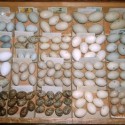 Photo ©
Keith Williams
Photo ©
Keith Williams

100 Years of Nest Protection
The year 2016 marks the centennial of the Convention between the United States and Canada for the Protection of Migratory Birds, thereby enacting the first international Migratory Bird Treaty. The follow-up Migratory Bird Treaty Act (MBTA) and three other subsequent international treaties form the cornerstones of joint efforts to conserve birds that migrate across international borders. Despite its name, the act also protects non-migrating birds, their nests, eggs, and young, making it illegal to harvest, destroy, or harass them unless you hold a permit. Prior to the treaty, it was perfectly legal to harvest the eggs of every single bird in a nesting colony and sell them for profit.
Celebrating the centennial of the first treaty allows us to honor those who have contributed to its success and to galvanize efforts to protect birds for generations to come. The U.S. Fish and Wildlife Service has even included citizen science as part of its national framework for bringing awareness to this important milestone in North American bird conservation.
How can you join the celebration? Here are some ideas:
The MBTA and its corresponding treaties in Canada and Mexico are the most important protections we have in place for birds and their nests. To learn more about the history of these and other laws, peruse this timeline of events, created by the U.S. Fish and Wildlife Service.

Is it Legal? The Migratory Bird Treaty Act Clarified
Every year, the public has questions about nesting birds, particularly those that are conspicuous or somehow compromised. Below, we recap some of these common questions and clarify which seemingly helpful interactions run afoul of the law.
This information is meant to help you understand the law and NestWatch protocol. It should not be construed as legal advice. Some activities may require a permit, which can be obtained by contacting your regional U.S. Fish and Wildlife Service office.

Poached: A Film On Eggs & Obsession
Self-destructive habits, broken relationships, and raids by the British police. No, we’re not talking about the plot of a Sherlock Holmes novel—rather, a documentary about the hobby of illegal egg collecting, still practiced by a handful of underground enthusiasts (collecting eggs was outlawed more recently in Britain, in 1954).
Obsessive specimen collection can wipe out a species, and yet this Victorian hobby still threatens modern birds in some parts of the world. This practice, motivated by neither food nor profit, is the subject of the new film Poached, a documentary that explores the addiction of illicit egg collecting in the UK. Our film review, plus the theatrical trailer, are available online.
The beauty of eggs, the thrill of the hunt…this feature illuminates a dark hobby that is both obscure and antiquated. However, an army of bird-lovers, wildlife police, and one reformed-collector-turned-citizen-scientist won’t let these “eggers” go unchallenged. The award-winning film is available on iTunes (rated PG-13).

Oology & Ralph’s Talking Eggs
Oology is the study of bird eggs, and it has a fascinating history in the United States. In Oology and Ralph’s Talking Eggs, author Carrol Henderson describes the history of one private egg collection, and situates it within the context of the larger field of study. The book tells the story of Iowa farmer Ralph Handsaker, an amateur oologist. As the author documents the massive collection for a museum, stories are revealed about each of the 800 egg sets.
In a period when the credibility of a bird enthusiast was judged by the size of his egg collection and the number of rarities it contained, the book is at times poignant (e.g., the collection of Iowa’s last Marbled Godwit nest). However, some might call egg collecting the origins of modern bird watching, as it marked a transition from commercial interest to naturalist pursuit. Others might go so far as to deem it a precursor to citizen science, as most collections ended up in museums where they contributed to research. One thing is certain: every egg has a story to tell, and this book will have NestWatchers listening.
Donate an old egg collection!
If, like Ralph’s descendants, you find yourself with an old egg collection, consider donating it to a local museum or university, or inquire whether Cornell University’s Museum of Vertebrates can accept your collection. Although egg sets have no value on eBay (it’s illegal to sell birds, their eggs, or nests), the value of a collection is priceless to a museum.